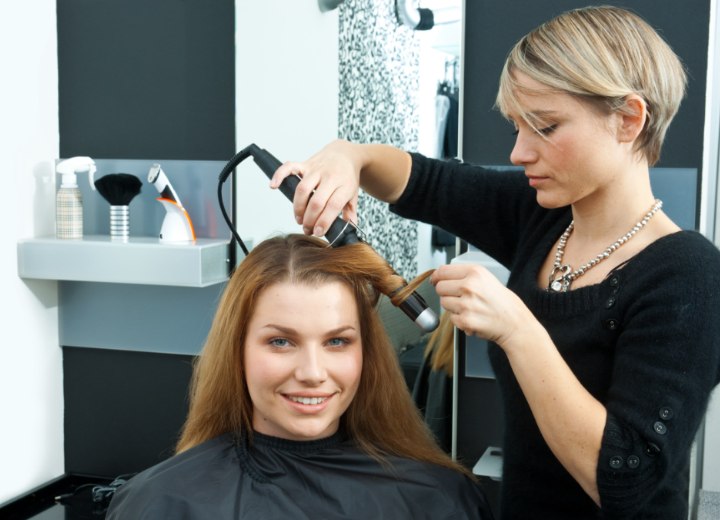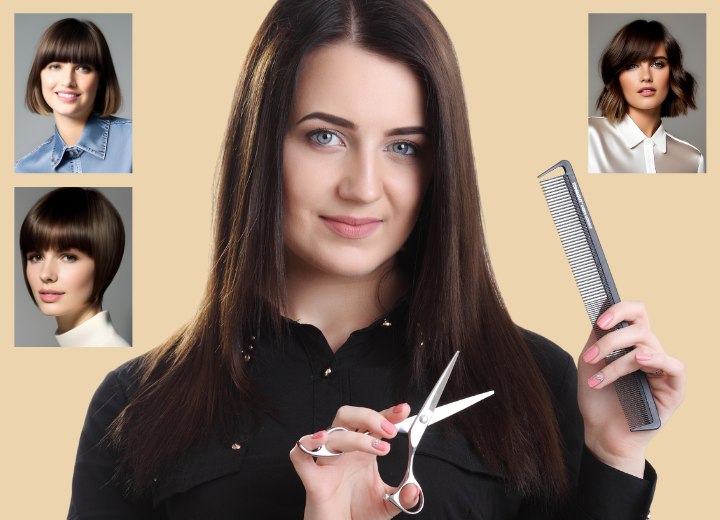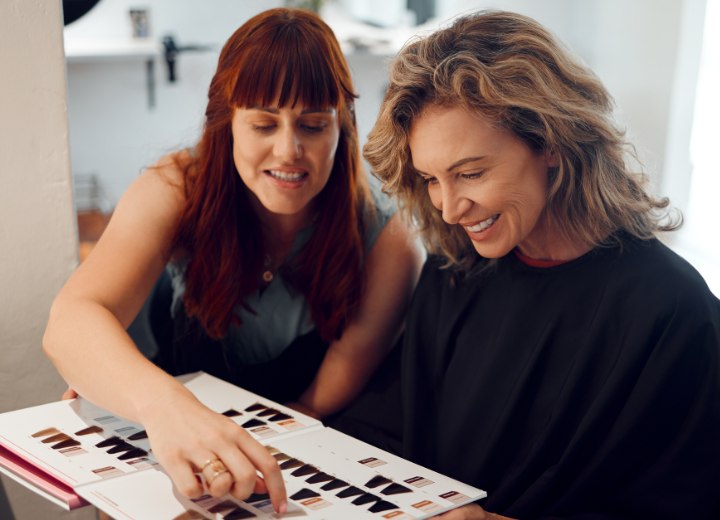More than Hair (2)

Because our client is going to need a perm further discussion is held about potential conditions that could affect the results. The client explains that she is being treated for a thyroid condition and that the medication she takes daily is reported to effect the growth of the hair. This lets the stylist know that she must pay close attention to the processing and progress of the perm service. It also confirms the need for a pre-perm shampoo with a clarifying product.
Many different illnesses, medications, dietary changes, and even environmental factors (such as using well water) can affect the hair and how it responds to a chemical service and even to physical styling techniques. Be sure to share any information about your health or dietary changes with your stylist.
When it comes to styling, the client’s face shape, balance of the facial features, and the line of the profile play a major role in determining which elements of style are most suitable. If the client has a prominent profile, the hair is usually best styled away from the face in a soft curve.
Other style elements are commonly used as well: bangs to cover a broad forehead, off-centered and angled partings to draw attention away from a largish nose, blunt horizontally cut bangs and/or high-volume curl to widen a narrow face, lift and volume on top with length below the chin to elongate a round face, ...
The goal of styling the hair is to create the appearance of an oval face, which is considered to be the ideal. Some women and men have a naturally oval face shape, while others are classified as square, round, triangular, diamond shaped, etc. The purpose of many style elements is to soften angles or add dimensions to the appearance of the face, creating the illusion of an oval shape where none exists naturally.

Sometimes, when styling the hair, a client's hair doesn't necessarily behave "normally". The hair may grow in different directions and may, as a result, be difficult to style in the way you intend. Whenever a style can incorporate the growth patterns of the hair, the client will generally be pleased and the style will be easier to maintain. The hair should always be treated with respect to prevent over-stressing the hair, which can lead to pulled hairs and breakage.
Some growth patterns can be dealt with using traditional styling methods. For example, many cowlicks can be redirected using strong-hold styling product and heated styling appliances, while a "whorl" or "hair-stream" may need a chemical process (such as a straightener or perm) to overcome and redirect it.
There is a fairly common misconception that the hair grows vertically from the scalp at a perpendicular angle. In some people, this is the case, but for the most part, a person’s hair grows at some angle in relation to the scalp, and the direction of the hair’s growth can vary from area to area on the scalp.
The hair may be growing vertically at the forehead, but nearly parallel to the scalp on the sides and around the ears. The crown is commonly where whorls are found. Whorls are made up of hairs that grow from the head following a circular or curved line.
Other hair issues can be managed through different services and processes. Dry hair can be moisturized and nourished with deep conditioning treatments. Frizzy hair can be tamed by using a smoothing balm or anti-frizz serum and diffuser attachment on the nozzle of your blow dryer. Limp, lifeless hair can be given body and volume with a body wave. Dull hair can be given added shine with a clear gloss or tinted gloss color service.

Color only plays a part in styling services in two respects – ethnicity and actual hair color choices. People of different ethnic and racial backgrounds can have dramatically different textures to their hair, but the principles of styling are all the same. The one place where ethnicity comes into greatest consideration is in choosing hair color. The skin's tone and color will determine whether or not the hair can be colored using cool or warm tones, or if you need to stay safe and follow neutral lines in color choice.
This is another thing a good stylist is trained to judge. A good hairdresser looks at a client and can visualize a spectrum of hair colors that would be flattering and appropriate to the client's skin tone. A stylist is trained to understand the effects of lightness and darkness in color tones, and how to accentuate specific areas with highlights or add depth to the color with lowlights.
Good hairdressers are capable of more than just cutting hair. They are your advisors in matters of appearance. They are coaches in matters of grooming, and they are trained to help you look your very best. Regardless of the conventions of society, you can always find something to help you feel better about yourself and look more attractive.
©Hairfinder.com
See also:
How to find a good hair stylist
How to get a good haircut
How to deal with a bad haircut
Talents and skills to become a good hairdresser